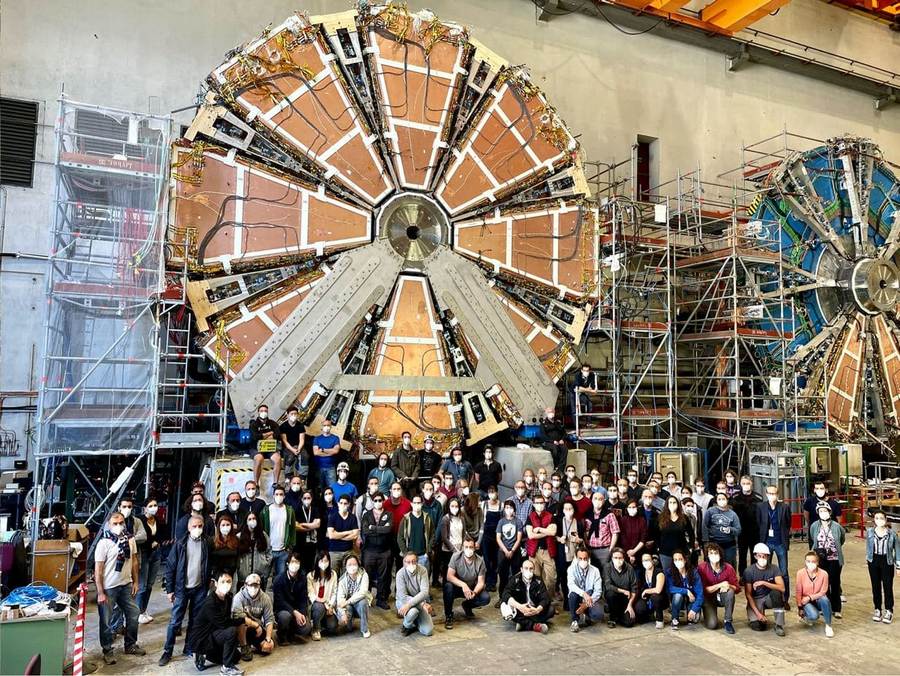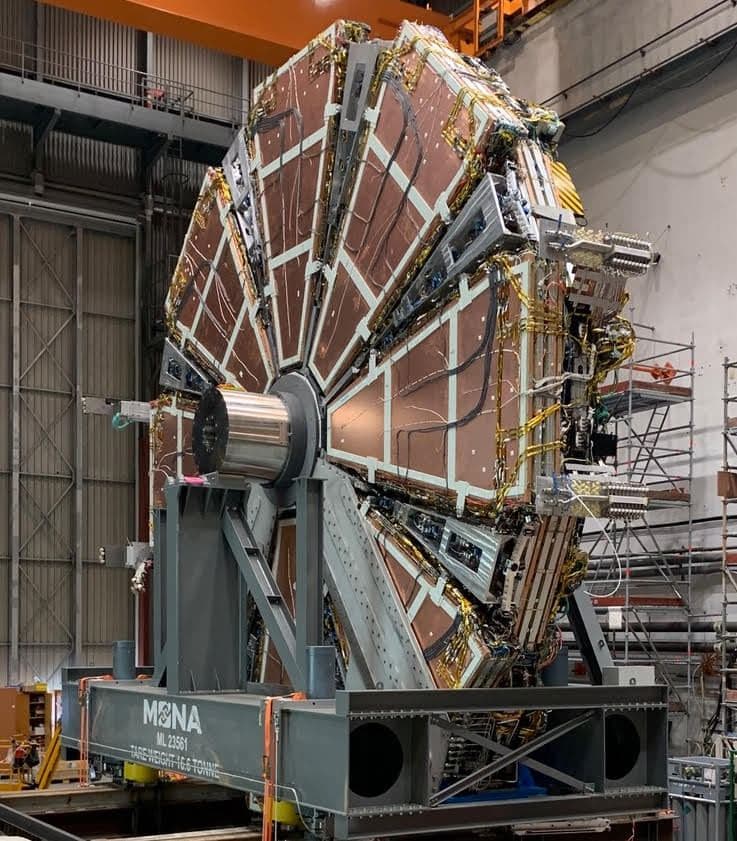Micromegas Chambers of the ATLAS New Small Muon Wheel Recorded the First Signals
On 19 October 2021, the Large Hadron Collider (LHC) test launch with pilot proton beams was performed after the almost three-year upgrade. Two-week tests are scheduled, as well as the first low-energy collisions. Afterwards, the facility will be shut down again for maintenance from 1 November till 21 February. The first stable beams of Run 3 are expected at the very beginning of next May.

 New Small Muon Wheel. The ATLAS collaboration. Credit: CERN
New Small Muon Wheel. The ATLAS collaboration. Credit: CERN
The ATLAS upgrade required developing a new generation of muon detectors capable of operating with the increase in luminosity by a factor of ten compared to its design value. The first large subsystem upgraded was the most loaded component of the muon spectrometer, the so-called “small wheel”. The need to upgrade it arose from two reasons: the requirement to keep high efficiency at higher load and increase of the background suppression level in the first level trigger. The main coordinate detector of the “new small wheel” is Micromegas chambers to whose development DLNP physicists contributed a lot. Small-strip thin gap chambers (sTGCs) are used as trigger detectors.
 ATLAS New Small Muon Wheel. Credit: CERN
ATLAS New Small Muon Wheel. Credit: CERN
Although detectors have not reached their operating voltage yet, sTGCs and Micromegas are already observing the first signals.
The first panel of the Micromegas chamber was successfully assembled for the ATLAS muon spectrometer upgrade as far back as May 2017. At that time, to perform this work, a special site for manufacturing and testing Micromegas chambers was established at DLNP. In June 2021, the DLNP muon group finished manufacturing and testing Micromegas chambers. At present, all detectors produced by the group are successfully installed at the ATLAS New Small Wheel structures.
 First signals from the New Small Muon Wheel of the ATLAS detector. Credit: ATLAS collaboration
First signals from the New Small Muon Wheel of the ATLAS detector. Credit: ATLAS collaboration


